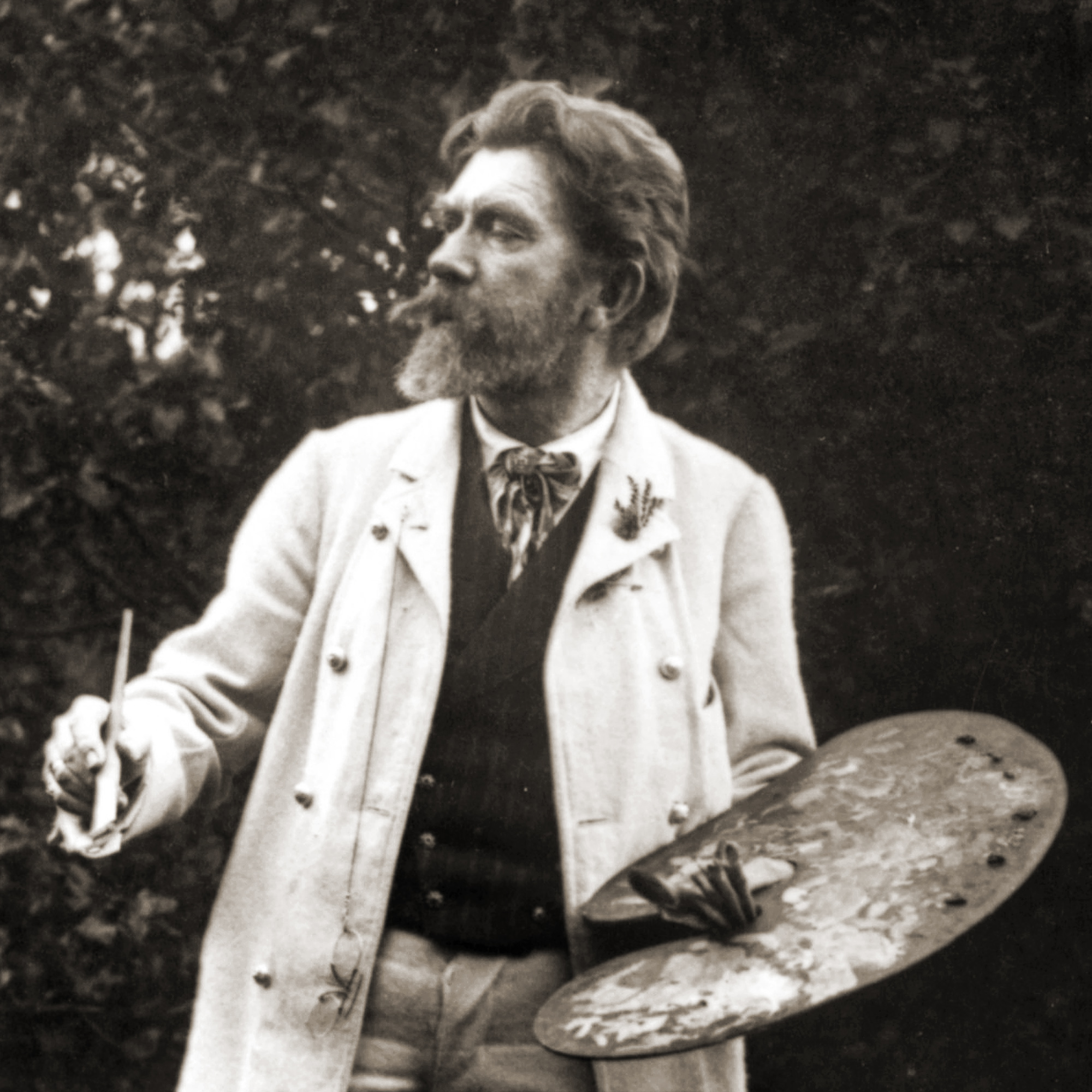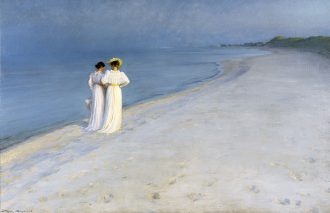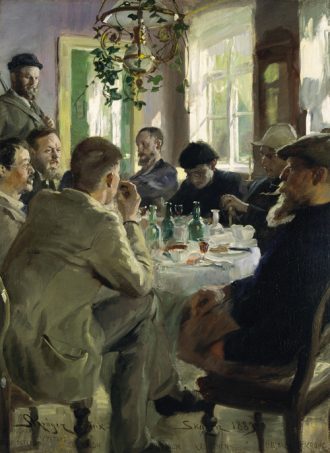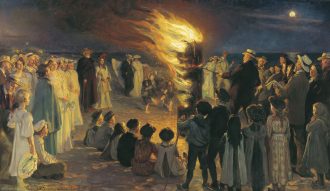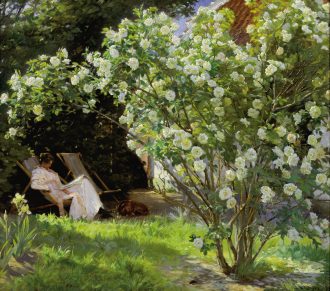Peder Severin Krøyer
Peder Severin Krøyer (often referred to as P.S. Krøyer) was 14 years old when he first enrolled to the Royal Academy of Fine Arts in Copenhagen. From a young age, he was talented as an artist, and he was highly respected as a portrait painter, which was a very prestigious genre. In the beginning of his career, Krøyer was a very sought after painter and worked plenty of comissions. This was the common way for painters to work back then, until the artistic revolution of the impressionist painters.
When Krøyer arrived at Skagen for the first time in 1882, he was already a famous painter, so his presence helped to build the town’s reputation as an artists’ colony. Krøyer was fascinated with the life of the town, and when he married Marie Krøyer, they settled permanently in Skagen from 1891.
In Skagen, Krøyer portrayed the life of the artists. Scenes such as walking along the beach, dining together, and the magnificent atmosphere of the evenings in the moonlight was Krøyer’s chosen motifs.
One of Krøyer’s most iconic masterpieces Summer Evening in Skagen Sønderstrand from 1893 is one of the most famous works from this period. The painting was sold to German Lilli Lehman, and was therefore located for a long time in Germany. For reasons unknown, the painting ended up on auction in 1978, where there were many potential buyers. The highest bidder was the German Axel Springer, and the price was the highest ever for a Danish artwork. Springer understood the agony of Danish art lovers, so he made arrangements to donate the painting to Skagens Kunstmuseer after his death.
In the course of the early 1900s, Krøyer became ill and was admitted to a psychiatric hospital. Consequently his wife asked for a divorce so she could marry her new husband. Marie Krøyer moved to Sweeden and left behind their daughter, Vibeke Krøyer in Skagen.
Krøyer died in 1909, only 58 years old and was buried in Skagen.
Skagens Museum is home to the world’s largest collection of artworks by Krøyer including many of his most celebrated paintings. The two historic artists’ homes, Anchers Hus and Drachmanns Hus, both contains artworks by Krøyer.
